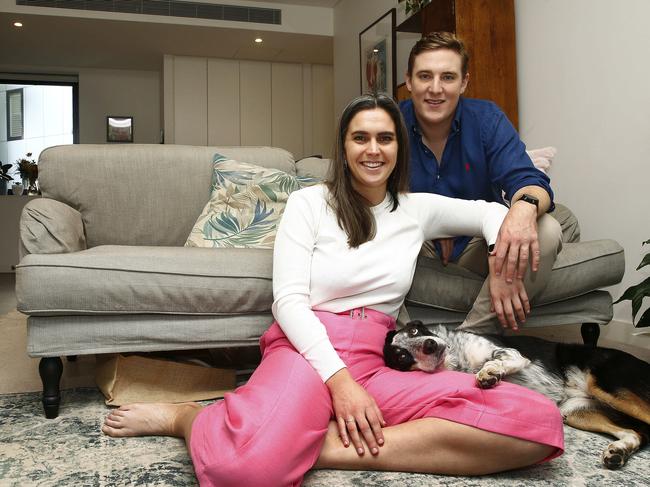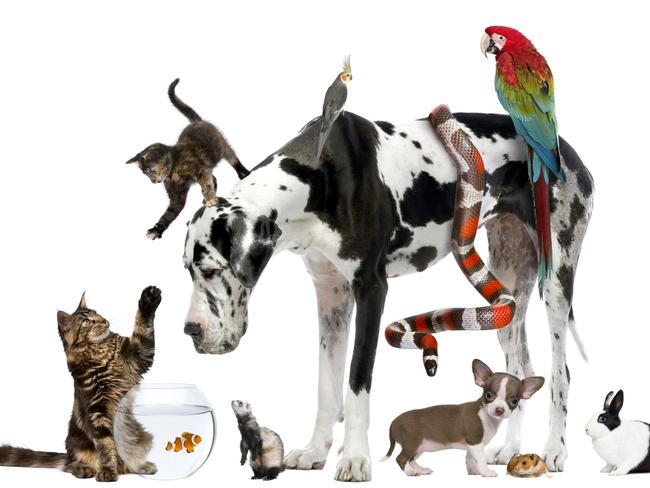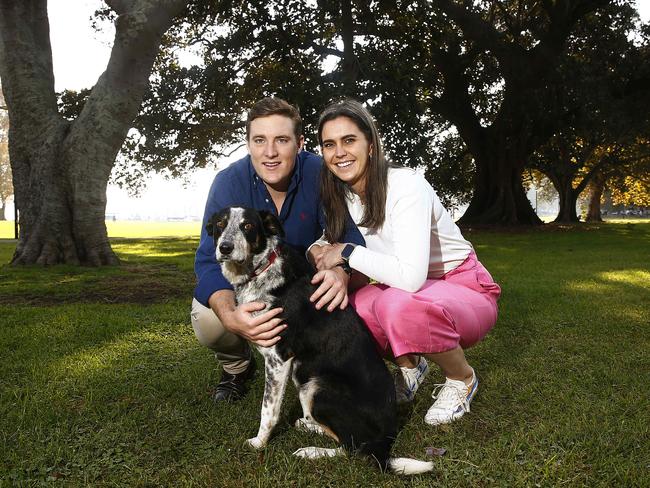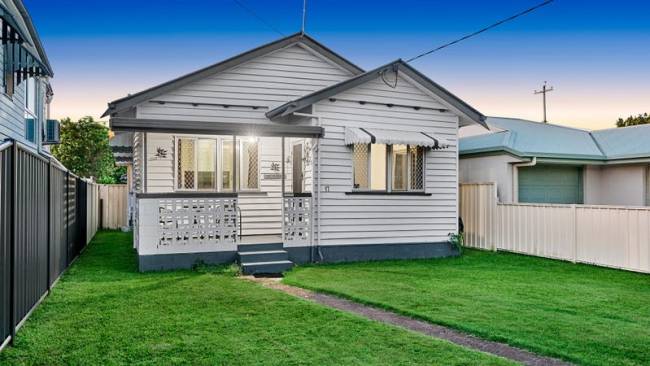Pet Advice: How to alter your lifestyle to help your dog or cat
If you think your lifestyle isn’t suited to a pet, or vice-versa, it’s time to think again according to leading experts in both fields.

Property
Don't miss out on the headlines from Property. Followed categories will be added to My News.
It began with a miniature schnauzer called Angus.
By all accounts he was a well-behaved pooch, to be expected at his advanced age of 13. He lived with his owner Jo Cooper in Sydney’s prestigious Horizon building in Darlinghurst, a fact that didn’t sit well with the property’s owners’ corporation which had banned pets in the building.
Efforts to turf Angus out of his home ended up in a lengthy legal backwards-and-forward that eventually ended in late 2020 with the NSW Court of Appeal finding, in effect, that blanket bans on pet ownership in apartment blocks in NSW were “harsh, unconscionable or oppressive” and that Angus should be allowed to keep admiring the beautiful city views from his high-rise home.

With that ruling, a precedent was set that now allows dogs, cats (or budgies or guinea pigs) to live in NSW apartments, unless there’s a good reason for them not to.
The laws about pet ownership in apartments differ from state to state.
Victoria, Queensland and the ACT have similar laws to NSW, with building owners forbidden to ban pets without a good reason, although tenants and owners are still expected to seek formal permission and register their pet’s details with strata.
But what’s clear is that more and more people are accepting that pet ownership is a huge part of Australian life, no matter where their owners live.
POSITIVE LIFESTYLE IMPACT OF PET OWNERSHIP
Nearly two-thirds of Australians own a pet, with nine in 10 owners reporting that their pets have a positive impact on their lives, according to the Pets in Australia report from Animal Medicines Australia.
The benefits to humans are many: companionship, improved mental health and even boosted immunity. In fact, we treat them as part of the family, with half of all dog and cat owners sharing their beds with their fur babies.
Developers all over Australia are taking notice.
“People moving from a house to an apartment would not even consider moving if it meant losing a much-loved member of the family,” says Mirvac general manager of Design, Marketing and Sales, Diana Sarcasmo.
The company kicked off its own pet friendly policies nearly 10 years ago when it launched Harold Park in Glebe, in Sydney’s inner west. New developments are deliberately located near large parks, perfect for dog walking.
Australia’s favourite dog breeds “under one woof”
It’s a similar story around the country, too. Gardenhill in Doncaster made headlines in 2015 for including Melbourne’s first purpose-built dog park within its development. And Fridcorp’s Beyond development in Hurstville, NSW, which will begin welcoming residents in September, will even have a doggie washing station to pamper pets after muddy walks, as well as interior floor surfaces designed to be durable when clacked over with scratchy paws.
“Owning a pet in an apartment has always been a bit contentious,” says Diana.
“But fortunately, strata by-laws have caught up with the way people want to live.”
CONTENTMENT IS THE KEY AIM FOR YOUR PET
An energetic working dog like a kelpie is not the first breed you’d imagine would settle happily in an apartment.
Five-year-old Gemma, who lives with her owners, lawyer El Leverington and insurance broker Freddie Evans, both 28, in an apartment, is a surprising exception.
“I got her straight off a farm and I think she grew up in a kennel, so she’s used to being contained,” says El.
“She’s also super lazy and we’re very active so it works well for Gem. She’s a unicorn.”
Gemma starts her day with a 4km walk.
“No matter how much we’ve had to drink the night before or how little sleep we’ve had, we take Gem out every morning,” says El.

“And that’s generally enough for her to want to curl up and sleep most of the day.”
Freddie works one day from home, plus Gemma goes out with a dog walker a few times a week, and a friend visits regularly to spend the day. And above all, she’s a contented dog that doesn’t chew the furnishings or annoy the neighbours.
“Gemma is the calmest dog in the world and doesn’t bark so she works pretty well for an apartment,” Freddie says.
Australia’s favourite dog breeds “under one woof”
TEMPERAMENT IS CRUCIAL IN CHOOSING THE RIGHT DOG FOR YOU
Although it’s commonly believed that smaller dogs such as chihuahuas or dachshunds are the best picks for small-space living, veterinarian Cherlene Lee says that temperament is the most important factor to consider when expecting a dog to live in an apartment or townhouse.
“You can have two dogs from the same litter and they’ll have completely different personalities,” says Lee.
Then, it’s a matter of commitment and planning.
“Some days I’d love to have a backyard so all I’d have to do is open the back door and I could stay out late,” says El.
“But having a dog in an apartment takes more consideration than that.”

If you’re not home much a cat may be better than a dog. Or consider a so-called ‘pocket pet’ like a guinea pig or rabbit (if legal in your state).
With dogs, training is key; whether it’s helping to relieve separation anxiety or interacting with other dogs in the elevator. Good training will also teach your dog to only relieve themselves when outside, rather than on your balcony.
Invest in an app such as a dog monitor so you can check in on your pet when you’re out and ensure she’s not barking and upsetting your neighbours.

Don’t miss the new look At Home with your Saturday newspaper or visit us online At Home.



